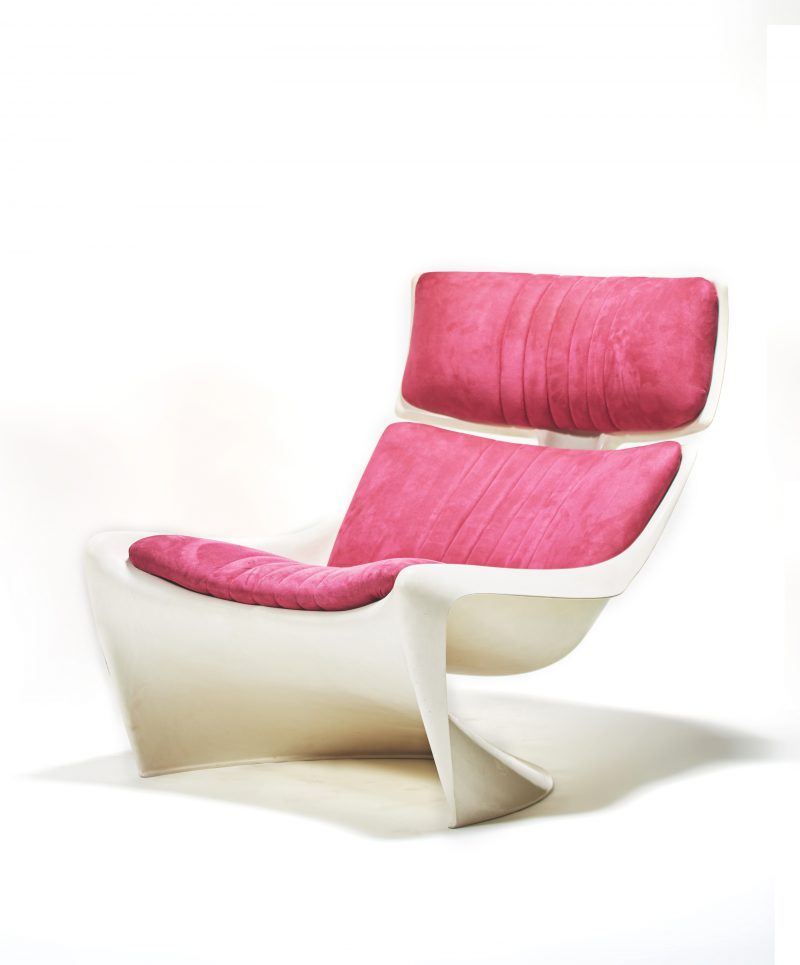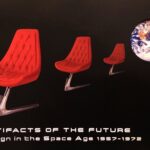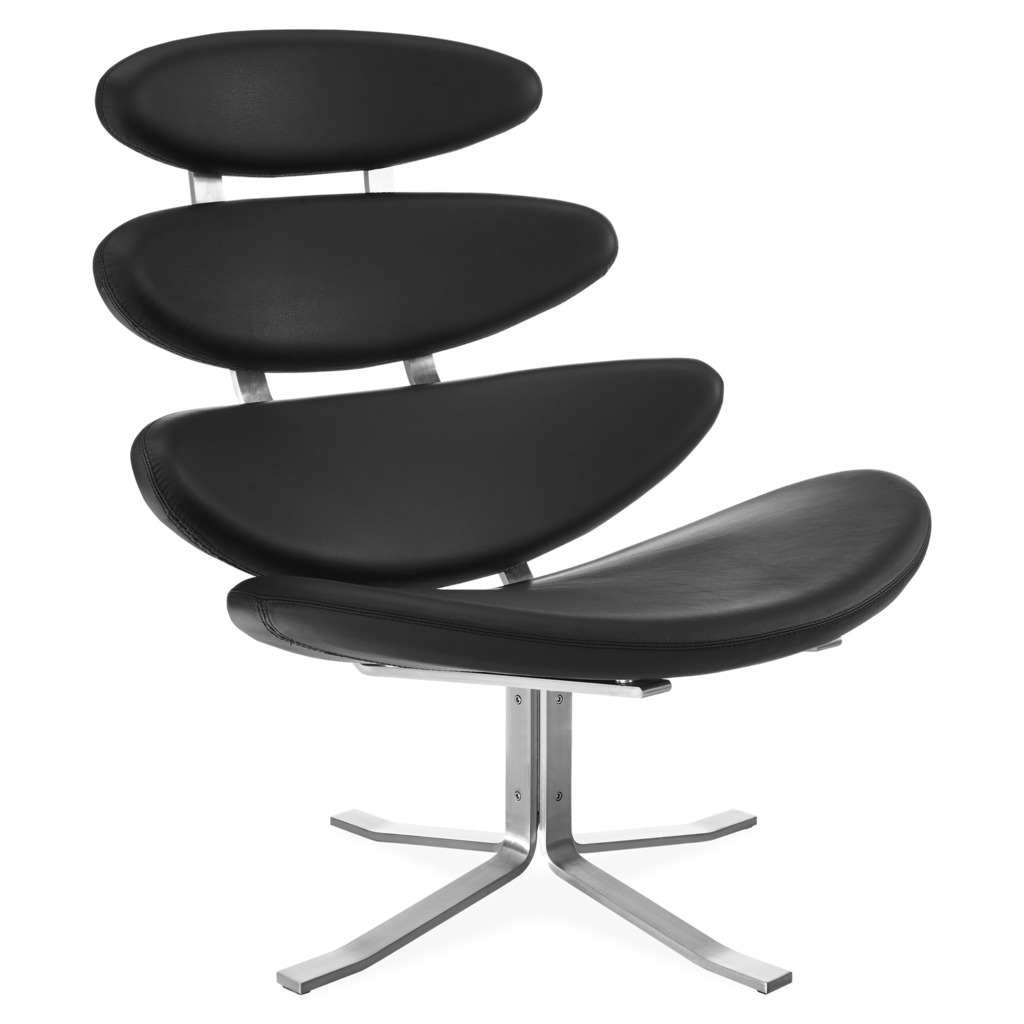
Space Age design tells the story of an era characterized by a drive to innovate, to (quite literally) shoot for the stars, when the lines between science and science fiction began to blur. This all had an influence on design, and Martin McGee has been working to unearth what the era still has to offer. Now he’s a collector, dealer, and his collections have formed exhibitions.
Defining the Space Age
McGee defines the Space Age era as beginning in 1957 with the launch of Sputnik and ending in 1972 with the end of the Apollo missions. While this is part of the Mid Century Modern era, McGee notes that this is later in the period. “While classic Mid Century Modern design continues to look contemporary, Space Age design continues to look futuristic,” McGee explains.
The telltale signs include a shift away from wood to materials such as plastic and chrome. Saarinen’s Tulip chair, he notes, was designed in 1957–right at the beginning of the Space Age–and is made predominately of fiberglass. “Saarinen would have made it entirely of fiberglass if he could have at the time. The chair still shows up in B-list science fiction films,” McGee notes.

Scifi Design
At the same time in Copenhagen, Arne Jacobsen was comprehensively designing the SAS Hotel, from the Swan and Egg Chairs to the cutlery. Jacobsen’s cutlery caught the eye of the prop team for the 1968 scifi film 2001: A Space Odyssey, and astronauts in the film use the futuristic flatware.
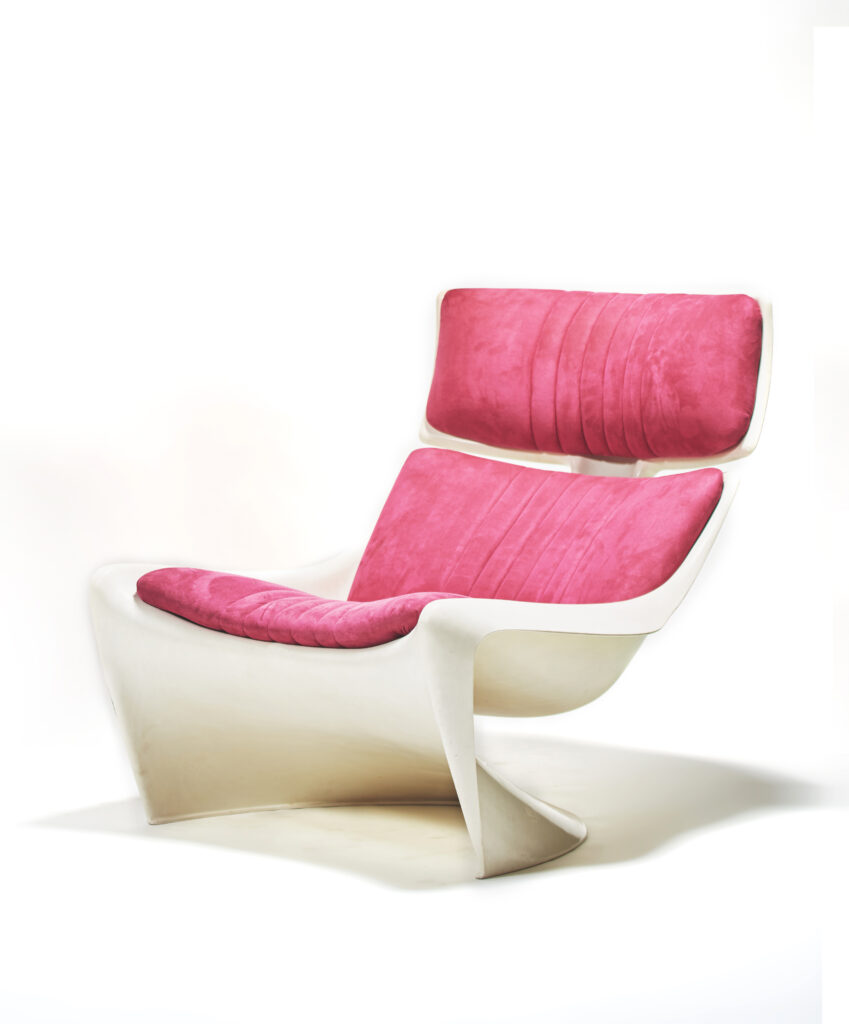
Speaking of scifi props, the President Lounge Chair figured in Captain Kirk’s apartment in an original Star Trek film. The chair is sculptural and exemplifies the trend away from wood to synthetic material such as plastic. “It’s an antique in the film among these collections from imagined cultures from other planets,” McGee notes. The design clearly resonated with the imagination of the period where “we expected lunar colonies within our lifetimes,” McGee recalls.
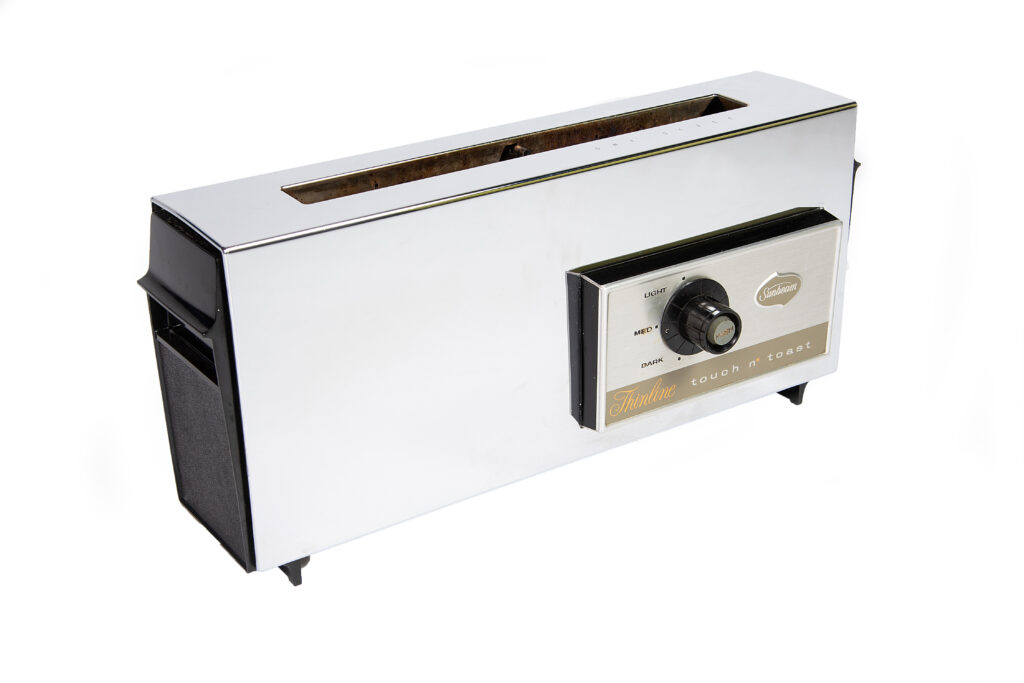
In the popular imagination of the time, McGee, who grew up in this era, notes that you couldn’t talk about the era without mentioning “The Jetsons.” You can see its stamp on items like this streamlined Sunbeam toaster. Rather than having two parallel slots for your toast, “It’s one elongated design, and it’s a push button rather than a lever so that you don’t have to exert that extra effort to push down a lever. [Laughs.] It’s like in ‘The Jetsons’ where you could push a button and your dinner’s ready.”
Constant Innovation
Having grown up in the era, McGee recalls “a tremendous rapidity of change. You couldn’t go to school wearing the same clothes you did the last year. Everything was stamped with the moment, and it was all about forward motion.” While a good bit of that, McGee surmises, was to do with consumerist drive, there was also a drive for innovation and a real orientation toward the future, evidenced by the period’s many prescient designs.

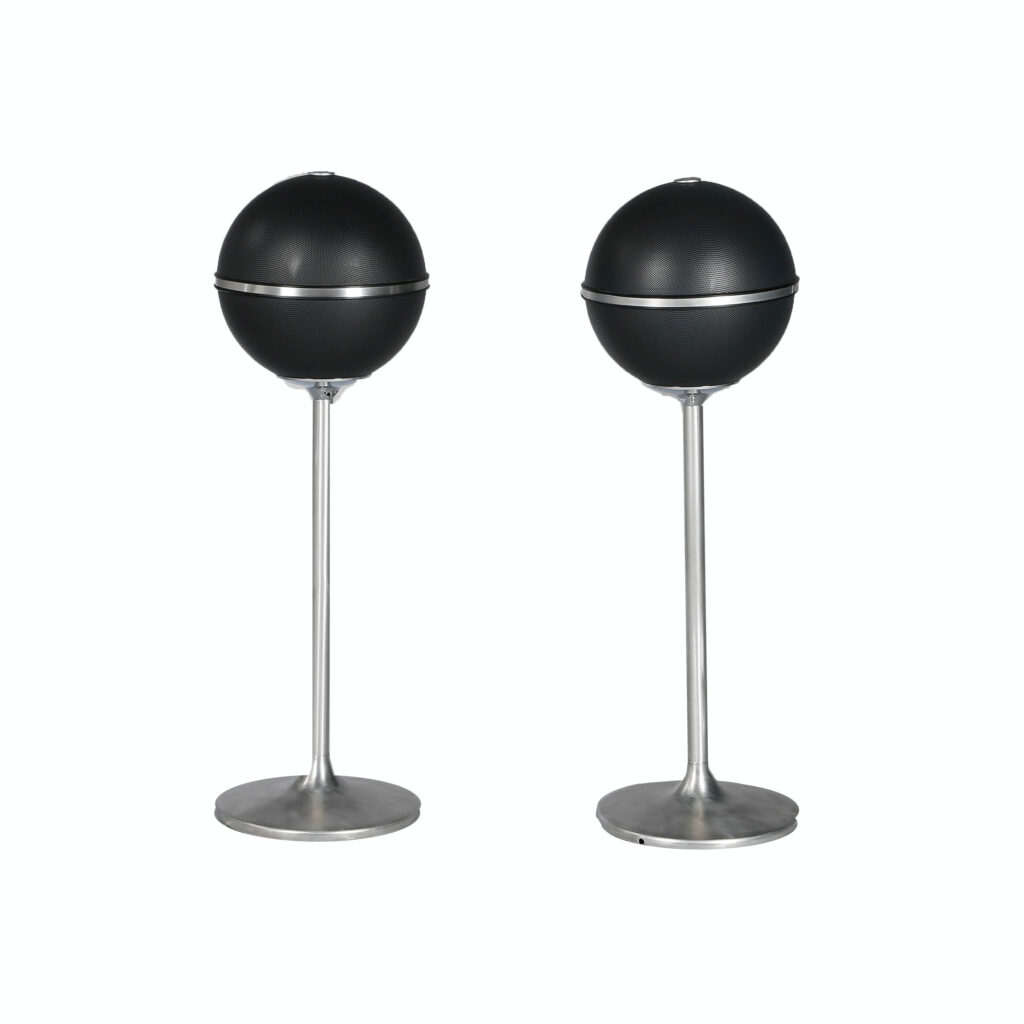
Technology and advances in science were part of this. With outer space at the forefront of the cultural and scientific imagination, spheres were a major design motif. McGee loves the German Audiorama speakers. They are an example not just of the lunar theme but also an instance of technological advancement. “They are actually better speakers for being spherical,” McGee explains, “because they include multiple smaller speakers inside aiming out.”
Where Did the Past’s Future Go?
With the end of the Apollo missions in 1972, interest in space and that interest’s influence on design declined sharply. Again citing science fiction, McGee contrasts 1968’s 2001 with the opening text of Star Wars. “In 2001, a 1968 film, you have the expectation that we’ll have lunar colonies within the next 30 years. By 1977 with the first Star Wars film, it’s set ‘A long time ago in a galaxy far, far away.'” Within the span of about a decade, the popular imagination towards space had dramatically shifted. Expectations moved from goals being achieved soon to a distant, fictional possibility due to “some major setbacks.”
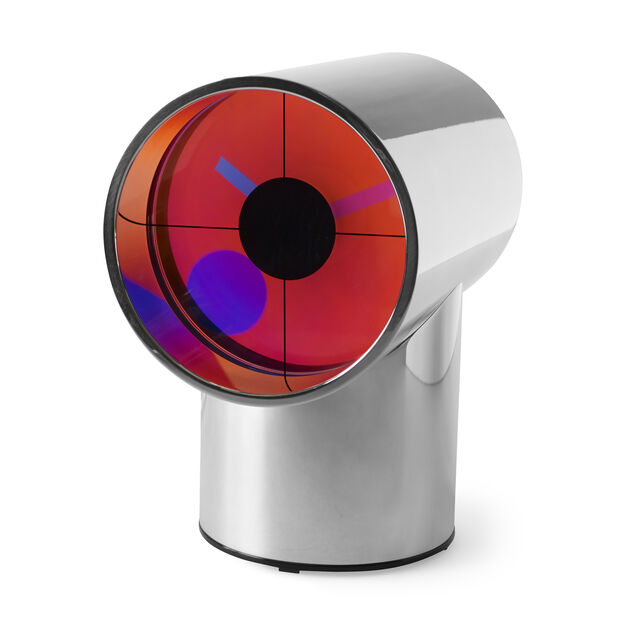
A cultural moment passes, and McGee observes, “it’s about a 50-year cycle.” An era’s design goes from passé to being quietly rediscovered, then re-emerging into popularity once again. As we know, this has happened with classic Mid Century Modern. McGee expects a resurgence in interest for late MCM’s Space Age to receive its proper due once again.
McGee works towards this end with his collections, Buffalo vintage store, as well as exhibitions, and now his book, Artifacts of the Future: Design in the Space Age 1957-1972 ($30 including domestic shipping). He collects with an eye to telling the story of this era, its rise, fall, complexity, and its influence on us now. “It was a transitional period between modern and postmodern,” he notes.
And if McGee has his way, we’ll realize that the 60s’ vision of the future still resonates.
Feeling the Space Age vibe? Read about The Futuro House.
Don’t forget to follow us on Instagram, Facebook and Pinterest for more mid century articles and ideas!

